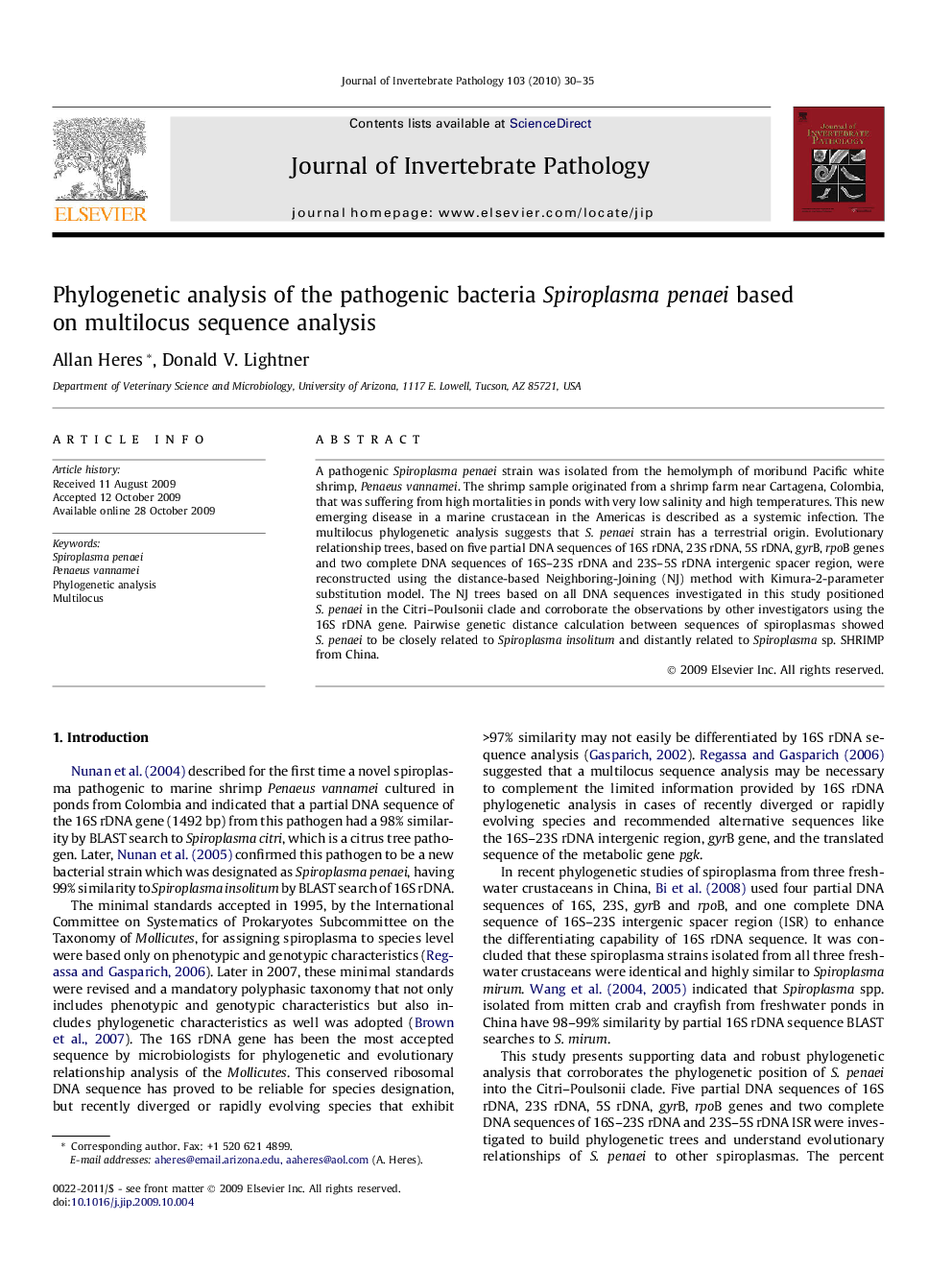| Article ID | Journal | Published Year | Pages | File Type |
|---|---|---|---|---|
| 4558315 | Journal of Invertebrate Pathology | 2010 | 6 Pages |
A pathogenic Spiroplasma penaei strain was isolated from the hemolymph of moribund Pacific white shrimp, Penaeus vannamei. The shrimp sample originated from a shrimp farm near Cartagena, Colombia, that was suffering from high mortalities in ponds with very low salinity and high temperatures. This new emerging disease in a marine crustacean in the Americas is described as a systemic infection. The multilocus phylogenetic analysis suggests that S. penaei strain has a terrestrial origin. Evolutionary relationship trees, based on five partial DNA sequences of 16S rDNA, 23S rDNA, 5S rDNA, gyrB, rpoB genes and two complete DNA sequences of 16S–23S rDNA and 23S–5S rDNA intergenic spacer region, were reconstructed using the distance-based Neighboring-Joining (NJ) method with Kimura-2-parameter substitution model. The NJ trees based on all DNA sequences investigated in this study positioned S. penaei in the Citri–Poulsonii clade and corroborate the observations by other investigators using the 16S rDNA gene. Pairwise genetic distance calculation between sequences of spiroplasmas showed S. penaei to be closely related to Spiroplasma insolitum and distantly related to Spiroplasma sp. SHRIMP from China.
